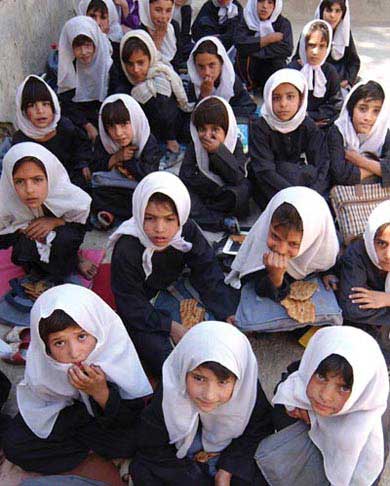
Reading:
Sections 1 and 2 of Progress of the World's Women 2002 by UNIFEM
Main themes of the Chapter: Progress, Millenium Development Goals, How to Measure Gender Equality/Women’s Empowerment
Progress
Begins with the notion of “progress” a loaded
term, very Western in its connotations, especially as traditionally
defined
What is your notion of women’s
progress????

Millenium Declaration - signed by 189 countries in 2000
Millenium Development Goals
1. eradiate exterme poverty and hunger
2. achieve universal primary education
3. promote gender equality and empower women
4. reduce child mortality
5. improve maternal health
6. combat HIV/AIDS, malaria, other diseases
7. ensure environmental sustainability
8. develop a global partnership for development
Why is gender equality and
women's empowerment important in meeting all the other goals?
Study after study has shown that there is
no effective development strategy
in which women do not play a central role.
When women are fully involved, the benefits can be seen
immediately:
families are healthier and better fed;
their income, savings and reinvestment so up.
And what is true of families is also true of communities
and, in the long run, of whole countries.
UN Secretary General Kofi Annan
March 8, 2003
How do we measure gender
equality, women's empowerment?
What kinds of data are most
often used to assess progress toward these goals?
these are controversial,
culturally derived, culturally variable
Agenda grows out of recent
decades' work on:
human rights (Vienna 1993
conference)
population and development (Cairo, 1994)
the Fourth World Conference on Women (Beijing, 1995 - the Platform for
Action)
World Social Summit on Development (Copenhagen, 1995)
UN Convention on the Elimination of All Forms of Discrimination Against
Women (CEDAW, 2003)
See Box 2 and 4 for some of
the goals established in these
Section 1: Assesing Progress Toward Achieving Gender Equality
Something to keep in mind in
assessing progress.
there is a tendency to
use only indicators related to education to gauge equality/empowerment
problems with this?
doesn't reveal
harassment
discrimination in workplace, choice of profession
glass ceiling
pay disparities
More than just disparity important - e.g. making education available to
all
at current rate, Africa will not reach universal primary education goal
til 2100
General pattern in progress,
women's empowerment:
biggest deficits in education, literacy, and
non-agricultural waged employment in the poorest countries
and/or
those with decided preference for sons;
women's
share of seats in parliament less dependent on level of economic
development, more a factor of political will of country
Only seven developed countries
have achieved high levels of gender equality and empowerment on all
selected indicators:
Sweden, Denmark, Finland, Norway, Iceland,
Netherlands, Germany
Developing countries that have improved dramatically on parliament
indicator:
Argentina, Costa Rica, South Africa
See charts and charts in
section 2 on poverty by region
Then Table 8-11 on highest,
lowest achievers, regional comparisons
How is progress made?
international development efforts
IGOs, NGOs
statistics needed
government efforts
political party
efforts
civil society
efforts, grass roots initiatives
Links from media on Afghanistan's loya jirga and women's participation:
news.bbc.co.uk/.../ newsid_2032000/2032169.stm
news.bbc.co.uk/1/hi/ world/south_asia/2044337.stm
www.cnn.com/.../central/ 12/14/afghan.loya.jirga/